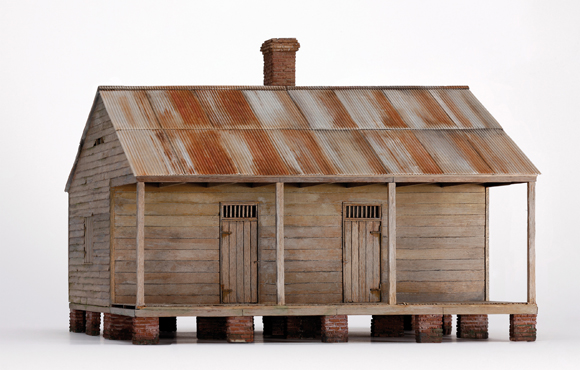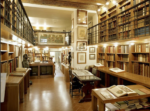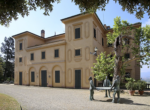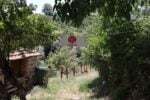Peter Friedl – Dénouement

Al centro della mostra c’è il concetto di modello e la sua poetica. Da sempre le opere di Peter Friedl nella loro capacità di condensare realtà complesse sono state interpretate come modelli: articolazioni e soluzioni esemplari di problemi estetici che coinvolgono una coscienza politica e storica.
Comunicato stampa
Sabato 9 novembre 2013, in occasione di Artissima e della Notte delle Arti Contemporanee, Guido Costa Projects ha l’onore di presentare Dénouement, la nuova mostra personale di Peter Friedl.
Il termine francese “dénouement”, traducibile letteralmente come “scioglimento”, o “risoluzione”, appartiene originalmente alla teoria del dramma: nella tragedia porta alla catarsi, nella commedia a un happy end. Peter Friedl declina brillantemente tale pluralità di significati nei suoi lavori creati negli ultimi due anni e radicalizza la sua ricerca artistica sull’interazione estetica tra il documento e l’artefatto.
Al centro della mostra c’è il concetto di modello e la sua poetica. Da sempre le opere di Peter Friedl nella loro capacità di condensare realtà complesse sono state interpretate come modelli: articolazioni e soluzioni esemplari di problemi estetici che coinvolgono una coscienza politica e storica. È l’idea di modello architettonico a cui corrispondono le quattro case di Rehousing (2012-2013), realizzate in scala con tutti i dettagli possibili: la casa paterna dell’artista in Alta Austria, quale traccia della memoria autobiografica ed emblema di caducità; la residenza privata di Ho Chi Min nella città di Hanoi, un caso specifico di architettura politica; l’utopia modernista della “Villa tropicale” di Luigi Piccinato, prototipo di una casa coloniale, progettata durante il Fascismo e mai realizzata, di cui sopravvivono alcune tracce in un numero della rivista Domus del 1936; infine, il modello naturalistico di un’anonima capanna degli schiavi della Evergreen Plantation in Louisiana. Sono, al di là della mimesi, case studies per una geografia mentale di una modernità diversa.
L’idea di modello governa anche The Dramatist (2013), il secondo gruppo scultoreo in mostra, formato da quattro marionette in cui sono distillate in forma di ritratto altrettante riflessioni sulla storiografia e narrazione politica. Le dramatis personae sono: Giulia Schucht (1896-1980), moglie di Antonio Gramsci; Toussaint Louverture, il rivoluzionario e liberatore di Haiti, morto prigioniero in Francia nel 1803; John Chavafambira, il “Black Hamlet” della prima psicoanalisi africana, documentato in forma letteraria a Johannesburg negli anni ’30; il celeberrimo magnate dell'automobile Henry Ford. Quattro personaggi in cerca d’autore e storie di vita esemplari, già presenti in diversi altri progetti e scritti di Peter Friedl a partire dagli anni ’90.
Un’altra opera in mostra è la maschera mortuaria dell’artista realizzata in vita, un’esercizio d’intimità critica, anch’essa corrispondente alla drammaturgia del “dénouement” e allo stesso tempo modello laconico di una poetica in cui si intrecciano storie personali e storie frammentarie della modernità.
La mostra di Peter Friedl rimarrà aperta al pubblico nei consueti orari di galleria fino a sabato 15 febbraio 2014.
Peter Friedl (b. 1960) è un artista che lavora in situ. Ha partecipato a documenta X (1997), a documenta 12 (2007), alla 48a Biennale di Venezia, alla terza Biennale di arte contemporanea di Berlino (2004), a Manifesta 7, Trento (2008), alla settima Biennale di Gwangju (2008), alla 28a Bienal de São Paulo (2008), a La Triennale, Paris (2012), e, recentemente, alla Biennale di Taipei (2012) e alla 10a Biennale di Architettura di São Paulo (2013). Tra le personali sono da ricordare luttesdesclasses, Institut d’Art Contemporain, Villeurbanne (2002), OUT OF THE SHADOWS, Witte de With, Center for Contemporary Art, Rotterdam (2004), la retrospettiva itinerante Work 1964-2006, Museu d’Art Contemporani de Barcelona, Miami Art Central, Musée d’Art Contemporain, Marseille (2006-2007), Blow Job, Extra City Kunsthal Antwerpen, Antwerp (2008), Working, Kunsthalle Basel (2008), e Peter Friedl, Sala Rekalde, Bilbao (2010). Dal 1980 ha pubblicato svariati saggi e libri, come Four or Five Roses, Working at Copan, e Playgrounds. Una selezione dei suoi testi è stata pubblicata con il titolo Secret Modernity: Selected Writings and Interviews 1981–2009.
Pubblicazione recente : Über Peter Friedl, a cura di Dirk Snauwaert, con saggi di Mieke Bal, Roger M. Buergel, Jean-François Chevrier, Norman M. Klein, Bartomeu Mari, Maria Muhle, Eva Schmidt, Marco Scotini, Hilde Van Gelder, Leire Vergara. Coedito da WIELS e Motto Books, 2013, 232 pagine, ISBN 978-2-940524-04-4.
Guido Costa Projects is pleased to present Dénouement, the new solo exhibition of works by Peter Friedl, on the occasion of Artissima’s “Contemporary Arts Night.”
The French word dénouement, which can be translated literally as “untying” has its origins in the theory of drama. It indicates the final resolution of a dramatic plot: tragedy results in a catharsis; comedy is associated with a happy ending. Peter Friedl explores this plurality of meanings masterfully in his output of the last two years, radicalizing his longstanding artistic research on the aesthetic interaction between document and artifact.
Central to the exhibition is the idea of model and its poetics. Owing to their ability to condense complex realities, Peter Friedl’s oeuvres have always been interpreted as models: as exemplary frameworks and solutions to aesthetic problems involving political and historical consciousness. In the case of Rehousing (2012–13) we are confronted with minutely detailed, scale models of four houses: the artist’s parental home in Austria, representing traces of autobiographical memory and at once an emblem of transience; the private residence of Ho Chi Min in the city of Hanoi, a specific example of political architecture; the modernist utopia of Luigi Piccinato’s Villa Tropicale, a prototype colonial house designed during the Fascist era but never constructed, a draft of which exists in a 1936 edition of the Italian magazine Domus; and finally, a naturalistic model of an anonymous slave hut on the Evergreen Plantation in Louisiana. These are, beyond mimesis, case studies for a mental geography of different forms of modernity.
The idea of model is also present in The Dramatist (2013), the second sculptural group in the exhibition: four handcrafted marionettes whose portraits inspire reflection on historiography and political narration. Here, the dramatis personae are: Julia Schucht (1896–1980), the wife of Antonio Gramsci; Toussaint Louverture, the leader of the Haitian Revolution who died a prisoner in France in 1803; John Chavafambira, the “Black Hamlet” from early African psychoanalysis documented in a novelistic narrative in Johannesburg in the 1930s; and the celebrated automobile magnate Henry Ford. Four characters in search of an author to recount their exemplary lives who have already appeared in previous projects and writings by Peter Friedl since the 1990s.
Another piece in the exhibition is a death mask of the artist made while alive—a study in critical intimacy. Framed by the dramaturgy of denouement, it is a laconic model of poetics in which personal stories and fragmented stories of modernity are interwoven.
The exhibition will remain open to the public until Saturday, 15 February 2014.
Peter Friedl (b. 1960) is an artist working in situ. His work has been exhibited internationally in venues such as documenta X (1997), and documenta 12 (2007), the 48th Venice Biennale, 3rd Berlin Biennial for Contemporary Art (2004), Manifesta 7, Trento (2008), the 7th Gwangju Biennale (2008), the 28th Bienal de São Paulo (2008), La Triennale, Paris (2012), and recently the Taipei Biennial (2012) and the 10th São Paulo Architecture Biennale (2013). Solo exhibitions include Luttesdesclasses, Institut d’Art Contemporain, Villeurbanne (2002), OUT OF THE SHADOWS, Witte de With, Center for Contemporary Art, Rotterdam (2004), the retrospective survey Work 1964–2006, Museu d’Art Contemporani de Barcelona, Miami Art Central, Musée d’Art Contemporain, Marseille (2006–07), Blow Job, Extra City Kunsthal Antwerpen, Antwerp (2008), Working, Kunsthalle Basel (2008), and Peter Friedl, Sala Rekalde, Bilbao (2010). Since the 1980s he has published numerous essays and book projects such as Four or Five Roses, Working at Copan, and Playgrounds. A selection of his texts has been released under the title Secret Modernity: Selected Writings and Interviews 1981–2009.
Recent publication: Über Peter Friedl, ed. by Dirk Snauwaert, with essays by Mieke Bal, Roger M. Buergel, Jean-François Chevrier, Norman M. Klein, Bartomeu Mari, Eva Schmidt, Marco Scotini, Hilde Van Gelder, Leire Vergara. Co-published by WIELS and Motto Books, 2013, 232 pages, ISBN 978-2-940524-04-4.



